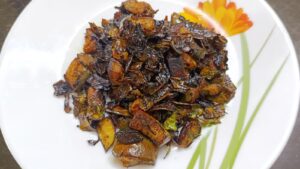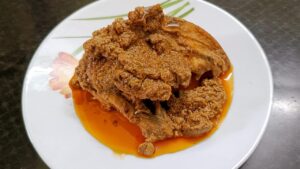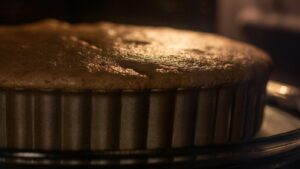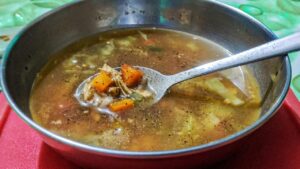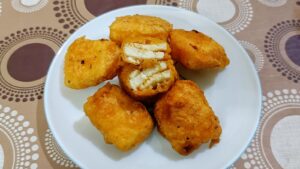The winters call for the green leafy cabbages. The lunch boxes of bongs are incomplete without the green peas popping out of the cabbages.
ADVERTISEMENT
To tickle taste buds why would the Katla heads lag behind? The dish is an awesomely favorite for the Bengalis.

Fish Head Bandhakopi Recipe Bengali Style
Equipment
- 1 Kadhai ( Solimo Hard Anodized Aluminium Deep Kadhai )
Ingredients
- One big cabbage
- 2 fish heads
- Salt
- Turmeric
- Cumin
- Red chilly powder
- Mustard oil
- 1 onion finely sliced
- Ginger-garlic paste two tablespoons
- Green chili 2-3
- Diced 2 big tomatoes
- Green peas
- 2 diced potatoes
- dry red chilies
- 2-3 bay leaves
- Cumin & coriander powder 1 tablespoon each
- Garam masala powder
- Ghee.
Instructions
- Boil the cabbage with salt and turmeric and keep it aside and allow it to dry.
- Salt and turmeric need to be applied to the fish heads and fried well.
- Now, after it has been fried well, now put bay leaves, dried red chilly, cumin seeds in the oil and put the potatoes to fry and fresh green peas.
- Then put the onions, ginger-garlic paste, tomatoes, green chilies, and cumin and coriander powder.
- Mix all the masalas well, then add the fish heads and cabbage, cook and mix them all for at least 5 mins and cover the lid of the cooking pan.
- Cover it until all the water gets dried up.
- Open the lid, add garam masala powder and ghee and stir for more 5 -7 mins
- The dish is prepared.
(Affiliate Disclaimer: Some of the links provided in the recipe are affiliate links. This means when you buy anything using those links, you help support this website at no extra cost.)
Affiliate Disclaimer: Some of the links provided in the recipe are affiliate links. This means when you buy anything using those links, you help support this website at no extra cost.
Find more Recipes
- Neem Begun Recipe | How To Make Neem Leaves & Brinjal Stir Fry
- Chicken Chaap Recipe | How To Make Chicken Chaap At Home
- Simple Vanilla Sponge Cake Recipe In OTG (With Eggs)
- Chicken Soup Recipe | How To Make Indian-Style Clear Chicken Soup
- Paneer Pakora Recipe | How To Make Paneer Pakoda At Home
- Koraishutir Kochuri Recipe | How To Make Motor Sutir (Peas) Kachori
Love food? Click here to check out my food blogs!
For any enquiry mail me at [email protected]
Connect with me for more:
Instagram(Lifestyle): @itsswarnab
Instagram(Food): @thebongtastes
Instagram(Travel): @thebongclicks
Zomato: @rajswarnab
All the images used in the blog are Copyright work of Swarnab Dutta and should not be used without permission.

